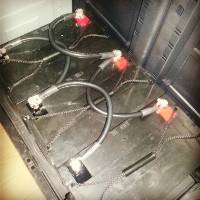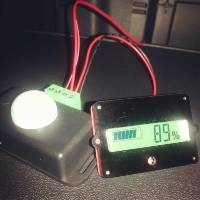Nothing, sometimes i use it to charge my Nokia 3410.
Yes, but there are also days which return you less power because its a cloudy day, in the Sommer yes.
So they ended up saying in a Forum 150WP minimum with 80AH Battery, which is enought to power a Raspberry PI B+ 350mA for like 7 Days without any sun and a Raspberry Zero which draws like only 100mA even longer like 21 days. 150WP Because there is also Winter and Cloudy days,
And that brings it to like 400-500EUR of costs, if you run that thing on grid its like 7EUR per Year.
Yes, but there are also days which return you less power because its a cloudy day, in the Sommer yes.
So they ended up saying in a Forum 150WP minimum with 80AH Battery, which is enought to power a Raspberry PI B+ 350mA for like 7 Days without any sun and a Raspberry Zero which draws like only 100mA even longer like 21 days. 150WP Because there is also Winter and Cloudy days,
And that brings it to like 400-500EUR of costs, if you run that thing on grid its like 7EUR per Year.


